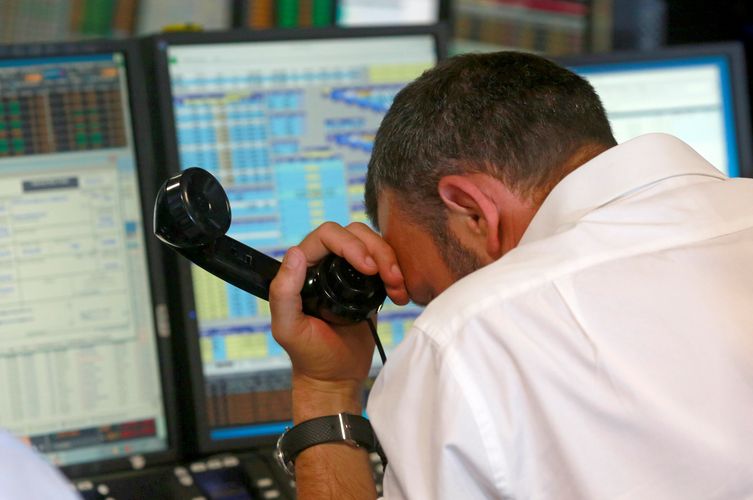You can’t say we didn’t see it coming. You can’t even say we weren’t looking forward to it. The Great Correction is not the Great Crash of 2018. What are we seeing?
Let’s review some of the cornerstones of Monday’s trading. The Dow closed at 24,345.75, down 1,175.21 points on the day, recording its greatest-ever points loss in a single day. In percentages, that works out at 4.6%, its worst day in eight years but compared to Black Friday in October 1987, when it lost nearly a quarter of its value, this is just a ripple in the pond. The intraday low was 23,923, which would have registered as a loss of over 6.5% although that particular part of the sell-off proved to be more of a bungee jump that was pretty much reflected in all indices from the S&P through the complex of the Russell 1000, 2000 and 3000. The VIX, so beloved by scribblers as the “fear index”, rose 20 points to 37.32.
There are no other words than the markets’ behaviour was completely irrational though it has to be added that that it is no more or less irrational than the blind bull run that we experienced in January. The sell-down pressure has been building for a number of days. As recently as January 26 the index was still riding high, up 7.22%, year-to-date. By last night’s close that had reversed to a loss of 1.51%. So what?
Get some in
Given the way in which the Wall Street and City grandees had sniggered at the spotty-nosed geeks, the cryptomaniacs who’d pushed bitcoin beyond any reasonable level in the two months of November and December and who’d then caught a cold in the downdraught, the geeks can now laugh back. The warning signs have been flashing hard that stocks can’t keep going up at the same time as bond yields. At the same time, however, the yield differential matrix between dividends and bonds is not yet structured in favour of the fixed income market. Stock markets had got ahead of themselves and were due a jolly good shake-out but they are not yet ready to go into full-scale retreat. Late last night I exchanged messages with a private investor who is already gagging at the opportunity to put some of his hoarded cash to work and to pick up some cheap stock.
From where I see it, the market has looked into the abyss and has scared the living daylights out of itself. It is, I believe, not ready to throw itself off the cliff. The economic fundamentals remain strong – if one is prepared to turn a blind eye to the amount of borrowed money upon which growth is based - and not meeting inflated earnings expectations is not the reporting companies’ fault but the markets’. Some of the froth had to be blown off the top and that would appear to be in the process of being done.
Asia followed the US lower but, as is those Asian markets’ wont, the gamblers led the charge with the Nikkei at one point being over 7% in the red. One day western players might finally grasp that in Asia, and especially in China, there is a lot less of this trying to dress up raw speculation in pseudo-scientific terms and the pretence that algorithms can’t make losses. The huge January rally in US markets followed by the trading pattern of the past seven days makes it quite clear that, once the mathematicians have been sent off to the coffee shop, it’s all back down to those old Wall Street room-mates, fear and greed.
It might take a couple of days for some of the leverage to be reduced and for a new, less geared-up equilibrium to be found but it is highly unlikely that we at the beginning of a long bear market. The cross-asset returns simply don’t justify major asset allocation shifts and holding piles of cash, if defined as an asset class, is hard to justify as more than just a short-term diversification trade. Notably gold, the bears’ favoured hiding place, went nowhere yesterday, closing at US$1,339.67, around US$20 below its mid-January high.
Open all hours
Europe might try to play a spot of catch-up today but by the time New York opens we ought to have seen the worst. Please don’t get me wrong, I’m not suggesting that risk assets are a screaming buy here. They are probably returning to more realistic levels, which would augur a period of flat trading. Up a bit, down a bit and sideways a lot.
Meanwhile, Jerome Powell was faced with this mess on his first day in office as chairman of the Fed. He will have been quickly and quite explicitly reminded that it was the central banks in general and the Fed in particular that launched this record-setting rally in risk asset prices by way of excessively loose, post-financial crisis monetary policy and that, having made the bed, they will have to lie in it. It was supposedly the pick-up in wage growth in Friday’s US non-farm payrolls report that put the fear of God into markets – average hourly earnings, year-on-year, increased by 2.9% - and matched with a fairly hawkish post-FOMC statement, all those superior CFAs and PhDs with all their clever investment and asset valuation models threw up their hands and ran screaming from the floor after hitting the panic button. I used to love the way in which Q used to say to James Bond: “Oh grow up, 007”.
Only when I laugh
Meanwhile bitcoin and its crypto-cousins continue to get filleted. Given the way they must feel as though all governments in the world have declared war on them, it’s not entirely surprising. Good news now comes out of Singapore where deputy prime minister Tharman Shanmugaratnam, in a written response to parliamentary questions, has declared that there is no reason to ban cryptocurrencies. He does not see them as systemically threatening, even after the sharp decline in values although stricter know-your-customer and anti-money laundering requirements imposed on intermediaries.
Much has been made of banks, most recently Lloyds, which have banned the purchase of cryptocurrencies on credit cards. What took them so long? How they could ever have let their customers, rising markets or not, punt foreign exchange on a credit card escapes me. The headlines would have read: “Small businesses can’t get working capital loans but teenagers were allowed trade bitcoin on a credit card”.
The sharp decline in the cryptos has many perplexed and the detractors dancing in the aisles. In a more rational world it looks as through the futures market has done what most of us thought it would do, which is to pitch the professionals against the amateurs and guess who’s winning. Hedge funds – and I don’t mean the so-called crypto hedge funds, many of which are no more than one geek, his dog and a Lloyds credit card – know how to trade on the CME and have stripped the would-be millionaires down to their knickers in what to them, with their fire power, has been like shooting fish in a barrel.
Bless this house
What damage they do to the nascent distributive ledger technology business along the way is not their problem. This is the same hard reality check that hit the dotcom entrepreneurs in 2001 when they woke up to realise that the world did not owe them a living, simply because they were being clever and innovative. It’s a hard and unrelenting dog-eat-dog world out there. There are endless blockchain conferences at which converts and believers pat each other on the back and tell each other just how wonderful they all are, but as they begin to shift from being technology start-ups to proper businesses, they are encountering folk who don’t care how clever they are but whether they can make money from their cleverness.
All the while there are governments that love technology when it enables them to control everything but hate it when it works the other way. Having spent the 10 years since the financial crisis trying to squeeze financial markets into micro-managed regulation such as MiFID II, they are finding that the world has moved on and they don’t like that at all.
The rest of this week will not be much fun but the world has not come to an end. We’re watching a long overdue and massively necessary correction and reality check taking place.
We should be celebrating it, not running scared.

